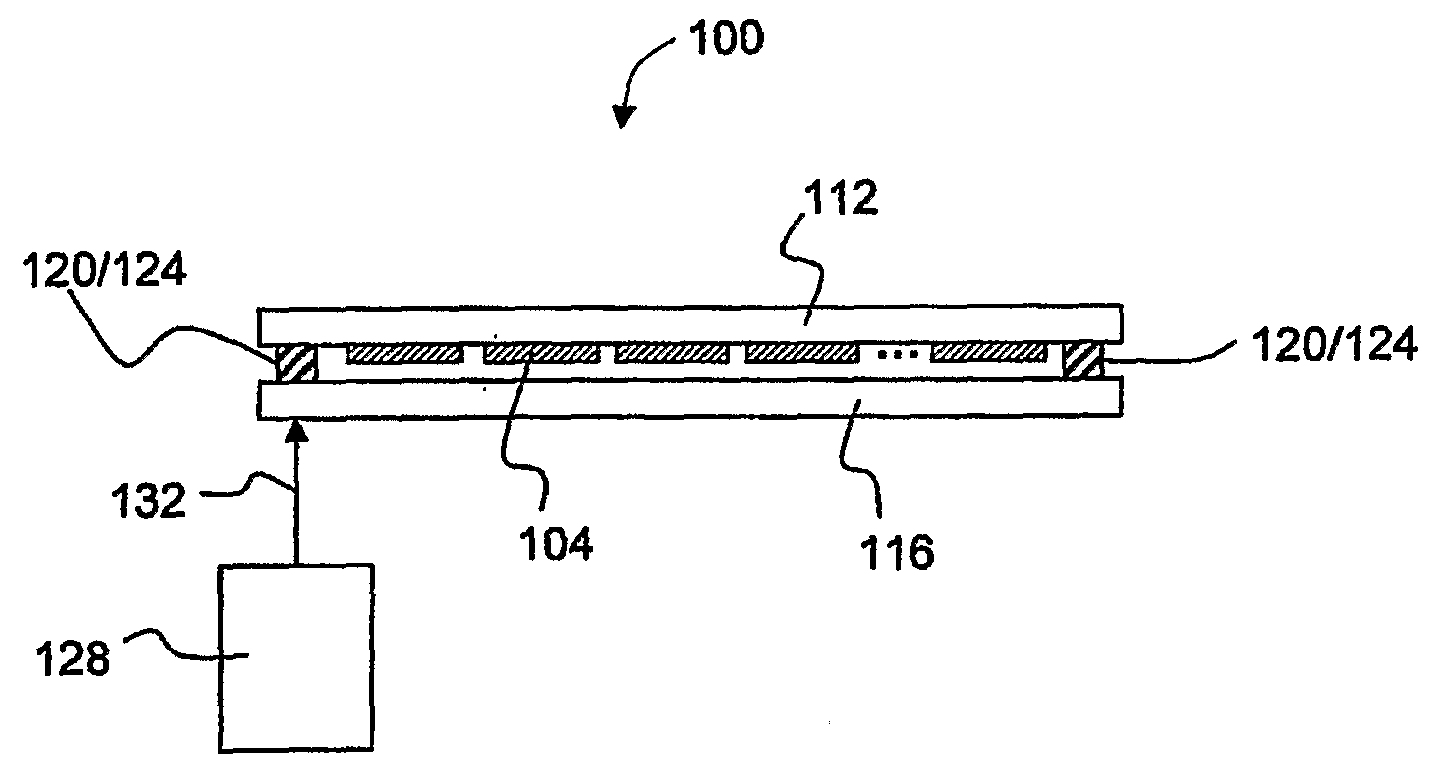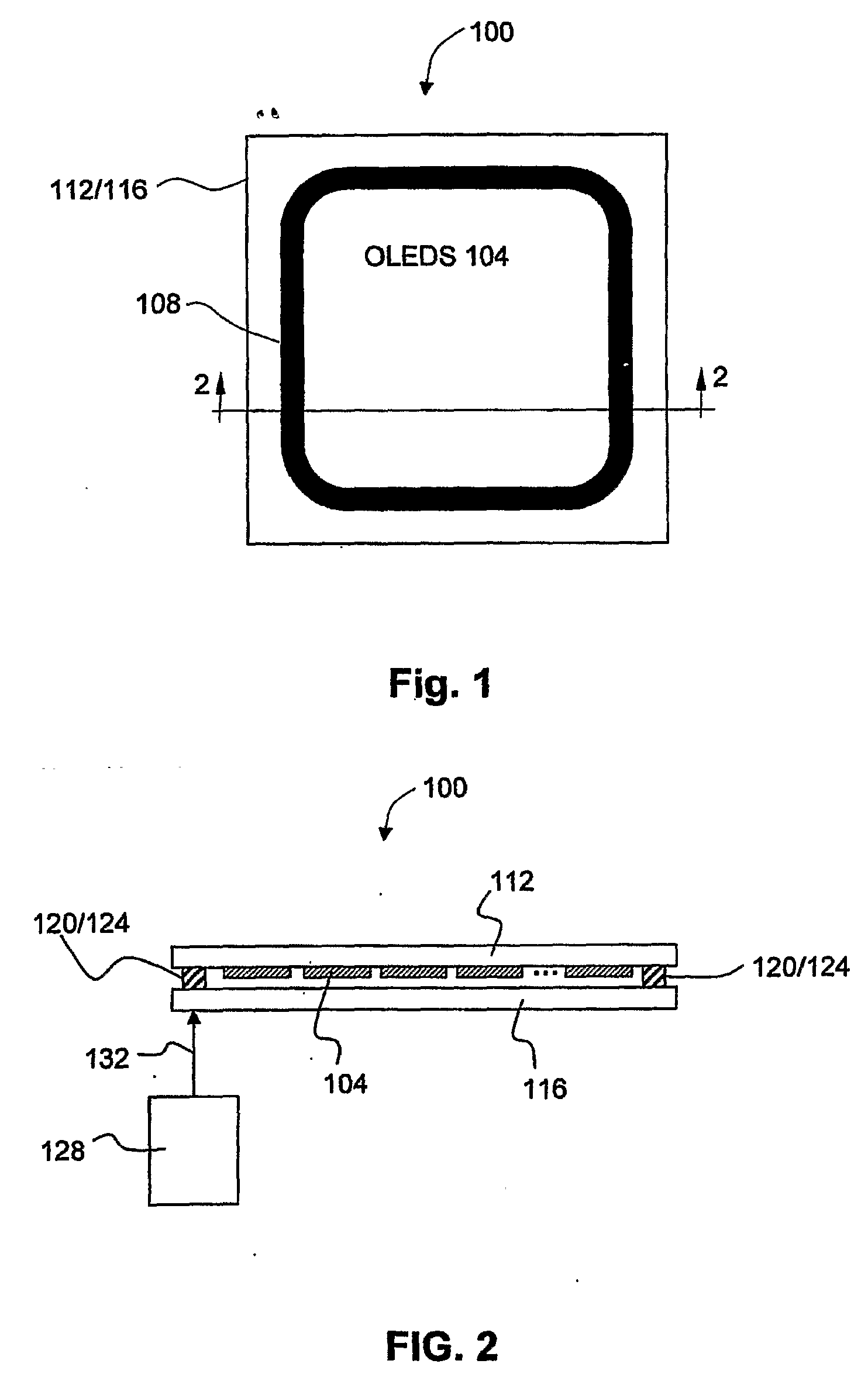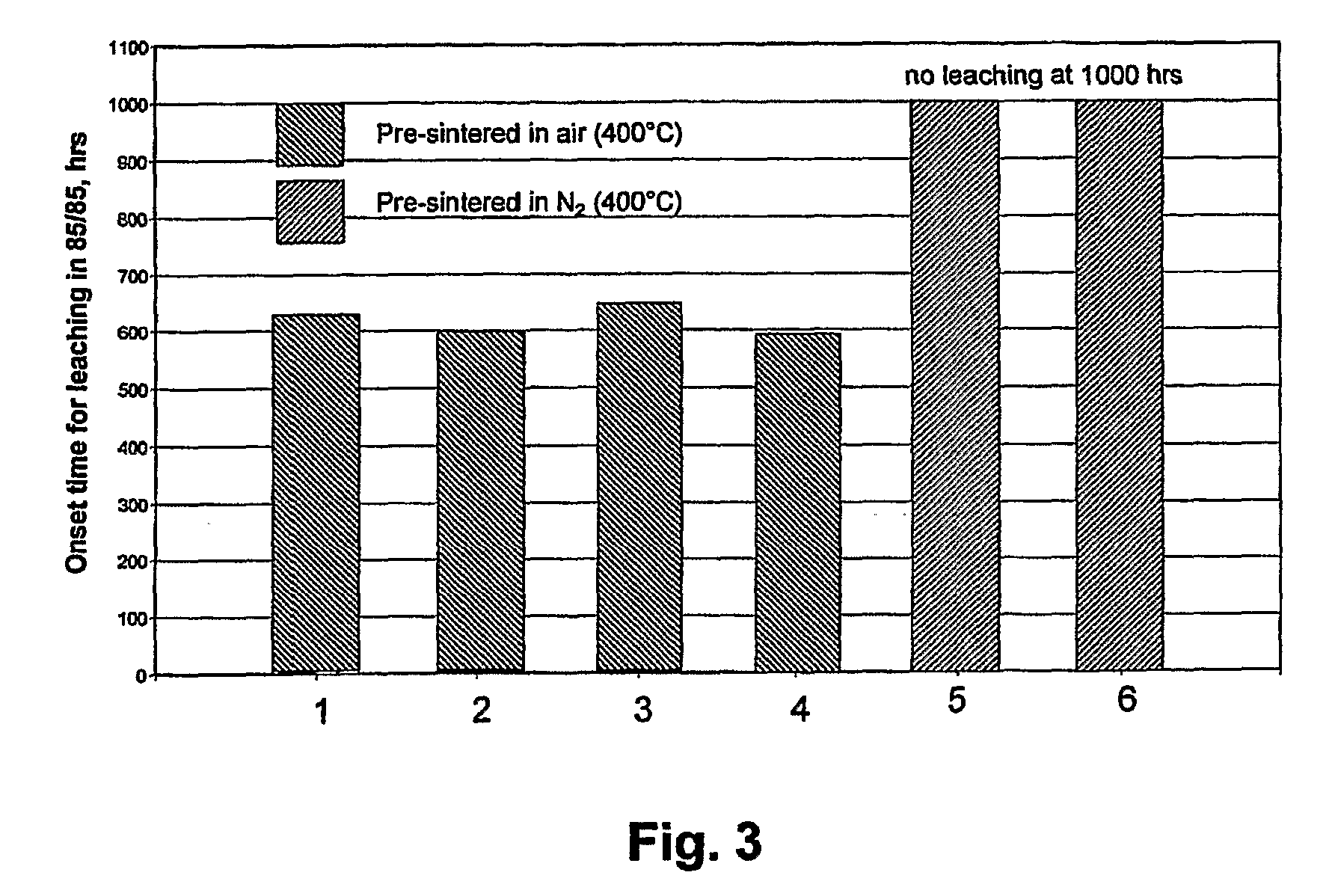Glass Package That Is Hermetically Sealed With a Frit and Method of Fabrication
a glass package and frit technology, applied in the direction of solid-state devices, electrical appliances, basic electric elements, etc., can solve the problems of difficult to develop a sealing process, difficult to reduce the thickness variation, and inability to maintain the seal for a long time. , to achieve the effect of avoiding thermal damage to the oled and reducing the variation of thickness
- Summary
- Abstract
- Description
- Claims
- Application Information
AI Technical Summary
Benefits of technology
Problems solved by technology
Method used
Image
Examples
example 1
[0042]Flow-buttons were prepared from base glass composition (mole %): Sb2O3, 23.5; V2O5, 47.5; P2O5, 27.0; Al2O3, 1.0; TiO2, 1.0 and filler composition (mole %): Li2O, 25.0; Al2O3, 25.0; SiO2, 50.0, and then pre-sintered in air, one at 400° C. and the other at 450° C. The 400° C. pre-sintered flow button was brown in color, while the 450° C. pre-sintered flow button was black. The flow buttons were then immersed in equal amounts of 90° C. D.I. (de-ionized) H2O for 48 hours. There was a substantial difference in aqueous durability between the two pre-sintering treatments: the 400° C. flow button exhibited sufficient chemical attack to turn the water a dark black coloration, and the 450° C. pre-sintered flow button exhibiting only minor chemical attack, turning the water a light green. The extent of water discoloration is related to the extent of vanadium leaching from the flow button and the resistance to H2O chemical attack.
example 2
Controlled Atmosphere Pre-Sintering
[0043]The major observable change associated with the lowering of pre-sintering temperature from 450° C. to 400° has to do with the color of the frit. For pre-sintering in air, frits heated to 450° C. were black, suggesting reduced vanadium species (V+3 or V+4) in the frit. Frits pre-sintered at 400° C. in air were invariably brown, suggesting V+5 as the dominant oxidation state. Direct confirmation of the color-oxidation state relationship for these frits could, unfortunately, not be obtained with certainty, since the available analytical techniques such as NMR, EPR, or XPS were either unable to detect all three oxidation states, or else gave irreproducible results on seemingly identical samples. However, indirect support for the color-oxidation state relationship exists since samples pre-sintered at 400° C. in increasingly oxidizing atmospheres ranging from 100% N2, 80% N2 / 20% O2, 50% N2 / 50% O2, 20% N2 / 80% O2, and 100% O2 turned increasingly brow...
example 3
[0044]This example demonstrates that pre-sintering under a less oxidizing atmosphere than air increases the environmental durability of the small particle size frits of the present invention. Two different sheets, each containing nine cells, or glass packages, made with SVP frits which did not contain Fe2O3, Nd2O3 or other rare earth metal oxides were sealed using a laser and then placed into an 85 / 85 environment. Prior to sealing, each sheet was initially fired to 325° C. in air to burn off all frit binder volatiles. Following this step, one sheet was pre-sintered to 400° C. in air, while the other sheet was pre-sintered to 400° C. in 100% N2. Oxygen measurements of the furnace atmosphere during the 100% N2 run indicated an O2 level of approximately 20 ppm. After pre-sintering and subsequent laser sealing, the sheets were placed in an 85 / 85 environmental chamber. Each sheet was then examined about every 48 hours to assess when leaching was initiated on any of the cells. The N2 pre-...
PUM
| Property | Measurement | Unit |
|---|---|---|
| wt. % | aaaaa | aaaaa |
| wt. % | aaaaa | aaaaa |
| mean particle size distribution | aaaaa | aaaaa |
Abstract
Description
Claims
Application Information
 Login to View More
Login to View More - R&D
- Intellectual Property
- Life Sciences
- Materials
- Tech Scout
- Unparalleled Data Quality
- Higher Quality Content
- 60% Fewer Hallucinations
Browse by: Latest US Patents, China's latest patents, Technical Efficacy Thesaurus, Application Domain, Technology Topic, Popular Technical Reports.
© 2025 PatSnap. All rights reserved.Legal|Privacy policy|Modern Slavery Act Transparency Statement|Sitemap|About US| Contact US: help@patsnap.com



